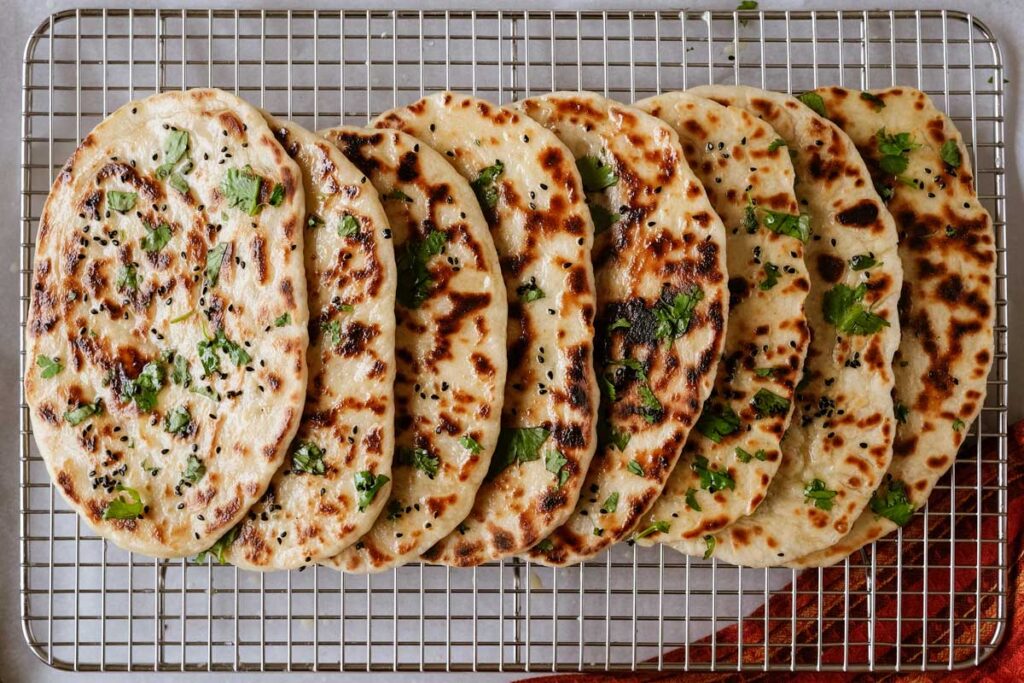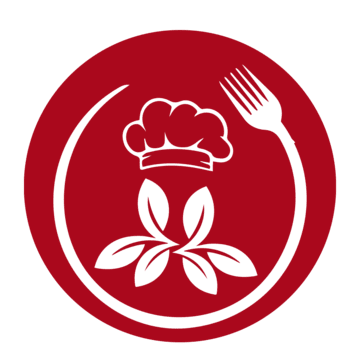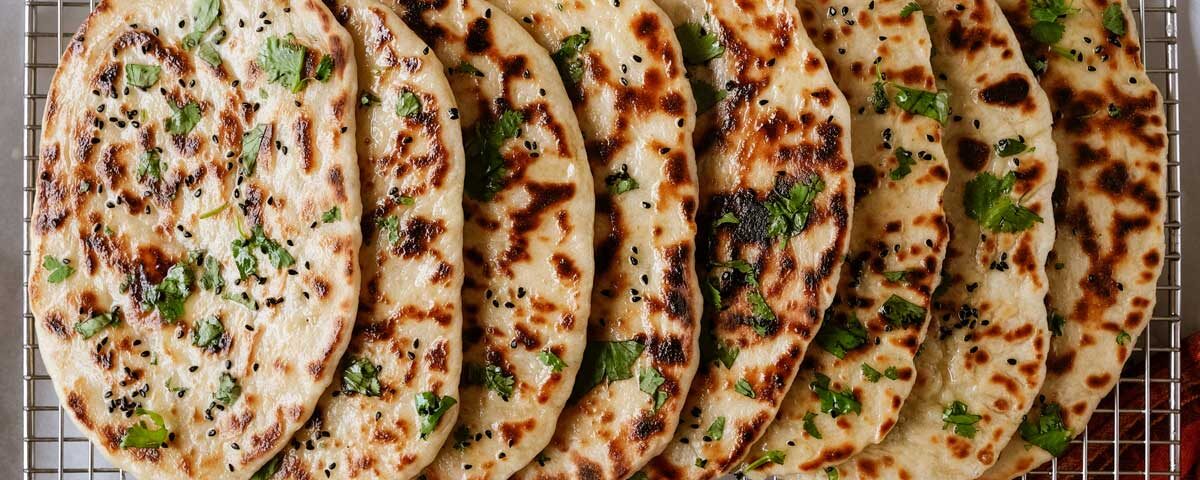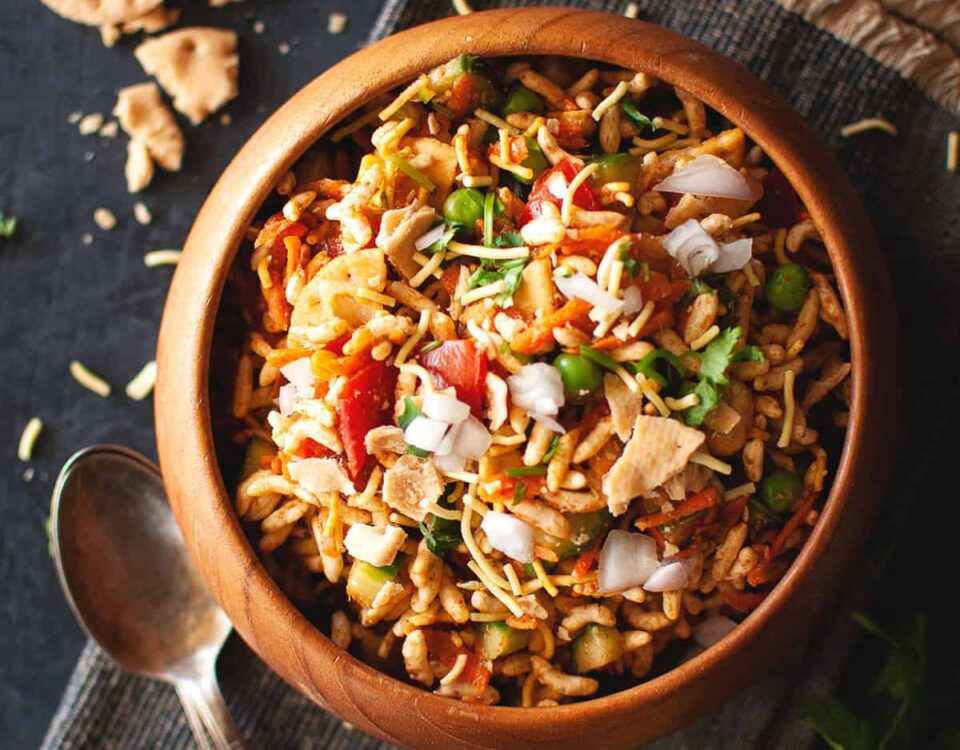
How to Make Authentic Spanish Paella: A Step-by-Step Guide

Chicken Curry: A Delicious and Flavorful Journey
The Ultimate Guide to Naan: Exploring the Richness of This Classic Bread
Naan is not just a food; it’s an experience—a soft, pillowy, and slightly chewy bread that beautifully complements a spectrum of culinary creations. Originating from India, naan has traversed geographical and cultural boundaries to become a beloved bread across the globe. In this comprehensive guide, we will explore the history, preparation methods, nutritional value, variations, and tips for making the perfect naan at home.

The Origin and History of Naan
Naan traces its roots back to ancient Persia (modern-day Iran) around the 1300s. The word “naan” itself comes from the Persian word “nān,” meaning “bread.” When the Mughals invaded India, they introduced many Persian culinary practices, including the concept of naan. Over the centuries, it became a staple in Indian cuisine, particularly in North India.
Naan’s popularity skyrocketed, and today, it is a key element in various South Asian, Central Asian, Middle Eastern and Iran cuisines. It is mostly enjoyed as an accompaniment to rich, hearty dishes like curries, tikka masalas, and kebabs.
Ingredients Commonly Used in Naan
At its core, naan requires only a few basic ingredients, although variations abound. The fundamental components include:
- Flour: All-purpose flour is commonly used.
- Yeast: For fermentation and leavening.
- Sugar: A small amount to feed the yeast.
- Salt: For flavor.
- Yogurt: Adds a slight tanginess and helps make the bread tender.
- Water: For hydration and kneading.
- Ghee or Butter: For brushing on top, making it extra flavorful.
Optional ingredients often include milk (for a richer dough) and nigella seeds or garlic for additional seasoning.
Traditional Preparation Methods
1. Mixing and Kneading the Dough
The dough for naan is relatively straightforward to make:
- Activate the Yeast: Dissolve yeast and sugar in warm water and let it sit until frothy.
- Combine Ingredients: Mix flour, salt, and yogurt; then add the yeast mixture.
- Knead the Dough: Knead the mixture until smooth. This can take about 10 minutes by hand or 5 minutes using a stand mixer.
- Let it Rise: Cover the dough with a damp cloth and let it rise in a warm place for 1-2 hours until it doubles in size.
2. Shaping the Naan
Once risen, the dough is divided into smaller portions. Each portion is rolled out into an oval or teardrop shape, traditionally about ¼ inch thick.
3. Cooking
Traditionally, naan is cooked in a tandoor—a cylindrical clay oven heated to high temperatures using charcoal or wood. The dough is slapped onto the tandoor’s inner walls, where it sticks and cooks quickly, resulting in a beautifully charred, puffy bread with slightly crispy edges.
For those without a tandoor, a skillet or oven broiler can be used:
- Skillet Method: Cook on a preheated, dry skillet until bubbles form on the surface and the bottom browns. Flip and cook the other side.
- Oven Broiler Method: Place naan on a baking sheet and cook under the broiler for 2-3 minutes per side.
Nutritional Value and Health Considerations
Naan is a source of carbohydrates and provides some protein, mainly from the yogurt and, optionally, milk used in the dough. One serving (approximately one naan bread) provides around:
- Calories: 250-300
- Carbohydrates: 40-50g
- Protein: 6-8g
- Fat: 6-8g
- Fiber: 2g
While naan is delicious, it can be calorie-dense, especially when brushed with ghee or butter. It’s best enjoyed in moderation, balanced with protein and vegetable-rich dishes.
Popular Variations of Naan
1. Garlic Naan
This version features minced garlic and cilantro, either kneaded into the dough or sprinkled on top before cooking. It adds a robust flavor that pairs well with most Indian dishes.
2. Cheese Naan
Filled with a mixture of grated cheese, this indulgent naan variant melts in your mouth. Commonly used cheeses include mozzarella and paneer.
3. Peshawari Naan
Stuffed with a mixture of dried fruits and nuts (such as raisins, almonds, and pistachios), Peshawari naan makes for a sweet and savory treat.
4. Roghni Naan
This type involves adding an egg wash and sesame seeds on top before baking, giving the bread a rich, glossy finish and nutty flavor.
Tips for Making Perfect Naan at Home
- Use Active Yeast: Ensure your yeast is fresh and active for the best rise.
- Proper Hydration: The dough should be soft and slightly sticky—too dry, and your naan will be tough; too wet, and it will be difficult to shape.
- Preheat Cooking Surface: Whether using a skillet or oven, ensure it’s hot before applying the dough.
- Use a Damp Cloth: Cover the dough with a damp cloth while it rises to prevent it from drying out.
- Brush with Butter or Ghee: Brushing with fat after cooking ensures a soft texture and a more flavorful bread.
- Experiment with Flavors: Enhance your naan with various herbs, spices, and fillings to suit your taste preferences.
Conclusion
Naan has earned a cherished spot in global gastronomy thanks to its versatile nature and delightful taste. Whether you’re enjoying traditional plain naan with rich curries or indulging in a modern twist like cheese naan, its appeal is undeniable. By understanding the rich history, fundamental ingredients, preparation methods, and various styles, you’re now equipped to appreciate and even create this delicious bread at home.
Feel free to experiment with different flavors and techniques—naan-making is both an art and a science, and with practice, you can master it to perfection. Enjoy every tender, flavorful bite!
Further Reading
If you found this guide helpful, consider exploring the following resources for more in-depth information:
- The Indian Cooking Course by Monisha Bharadwaj
- Madhur Jaffrey’s Indian Cooking by Madhur Jaffrey
- Artisan Bread in Five Minutes a Day by Jeff Hertzberg and Zoë François
Happy naan-making!


